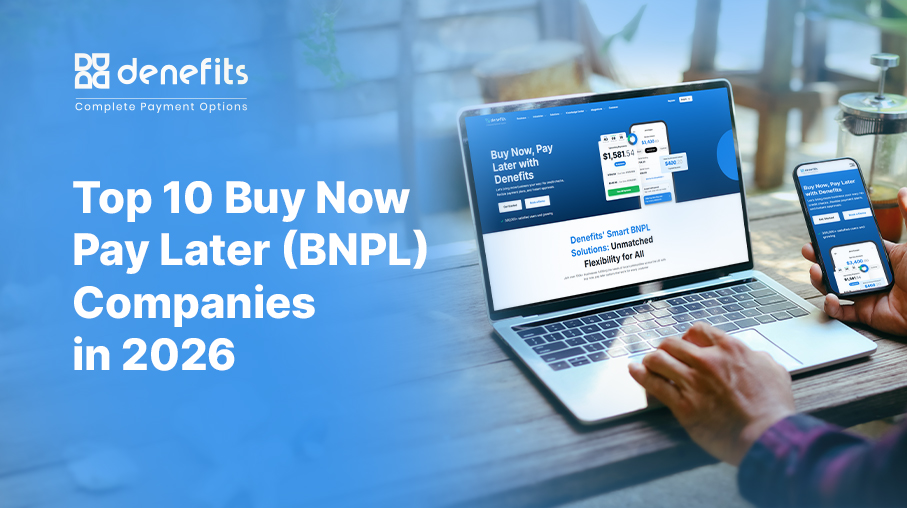
Whether you run a small business or a large one, your customers always appreciate financing options.
If you’re wondering, “How to offer financing to my customers?”.
The answer is simple: through customer financing.
Customers love the idea of paying in small installments rather than a large upfront amount. It makes purchases more affordable and less stressful, letting them get what they want without feeling the pinch.
In this blog, we’ll explain everything you need to know about customer financing and how to offer financing to customers.
What is Customer Financing
Customer financing lets your customers buy now and pay later in smaller, manageable installments. Instead of paying the full amount upfront, they can spread payments over weeks or months. Therefore, it makes big-ticket purchases much easier to afford.
For businesses, offering financing removes barriers for customers and boosts sales, while customers enjoy flexibility and peace of mind.
For example, imagine a patient who needs a $3,000 dental treatment. Paying that full amount at once can be overwhelming, and they might delay or skip it altogether. With customer financing, they could pay just $250 per month for 12 months. The treatment becomes affordable, the patient gets care when they need it, and the dentist secures the sale while building trust and loyalty.
💳 How Customer Financing Works
Interest
The customer selects a product or service they want to purchase.
Options
Financing options are discussed during customer interaction or at checkout (through in-house or a third-party).
Application/Approval
Customer provides basic details; credit checks may apply.
Plan is Set Up
Installments, duration, and any interest are finalized.
Final Purchase
Customer gets the product/service immediately.
Payment
The customer pays in installments over the agreed period.
Business Receives Payment
Either upfront (via third-party) or gradually (if using in-house financing).
Most Used Customer Financing Options
| In-House Financing | Third-Party Financing |
|
In this payment model, the business itself provides financing to its customers, acting like the lender.
Instead of going through a bank or third-party company, the customer pays the business directly in installments over time. The business sets the payment terms, interest (if any), and schedule, making it easy for customers to afford products or services while keeping the process straightforward. |
Third-party financing is when a business works with an outside company or lender to offer payment plans to customers.
Instead of the business handling installments itself, the financing company takes care of approvals, payment schedules, and collections, and sometimes even assumes the credit risk. This setup allows customers to buy and pay flexibly, while the business often gets paid upfront by the financing partner. |
How B2C Businesses Can Offer Customer Financing
1. Installment loans
They allow customers to pay for products or services in small, regular chunks instead of one big upfront payment. This makes expensive items easier to afford. For businesses, it helps increase sales and gives customers a clear, predictable payment plan.
Benefits for Customers
- Makes expensive products/services affordable.
- Provides financial flexibility without upfront strain.
- Predictable, fixed payments make budgeting easier.
Benefits for Businesses
- Encourages higher-value purchases.
- Expands customer base to include those who can’t pay upfront.
- Improves customer satisfaction and loyalty.
2. BNPL Services
With BNPL (Buy Now, Pay Later), customers can buy what they want and split the cost into short-term installments, often without extra fees if they pay on time. This makes it simple, convenient, and affordable, especially for online and retail purchases. Customers can split the cost into 4 or 8 payments, pay over 4 weeks, or choose 3, 6, 9, 12, or more installments, depending on the provider.
BNPL is typically provided through partners like Denefits, Klarna, Afterpay, or Affirm, but some businesses manage it internally as well.
Benefits for Customers
- Immediate access to products or services.
- Minimal paperwork and fast approval.
- Makes budgeting easier for short-term expenses.
Benefits for Businesses
- Boosts conversions and sales, especially for higher-priced items.
- Reduces cart abandonment in online and in-store sales.
- Appeals to younger and digital-savvy customers who prefer flexible payment options.
3. Retail Cards
Essentially, retail cards are issued by retailers and function like store-branded credit cards but are tied to a specific business.
Benefits for Customers
- Many retail cards come with perks like special sales, cashback, or reward points.
- 0% interest deals for a set period make purchases more affordable.
- Regular, timely payments can help customers build their credit score.
Benefits for Businesses
- Exclusive cardholder benefits build a long-term relationship with the brand.
- Offering store financing sets the business apart from competitors.
- When partnered with a bank, the retailer shares less financial risk while still reaping the sales benefits.
4. Credit Lines
A credit line is like a flexible loan that customers can use whenever they need it. Instead of taking all the money at once, they get a set limit and can borrow as much or as little as they want. You only pay interest on what you actually use, and as you repay, the money becomes available again.
Benefits for Customers
- They can use the credit line multiple times for different purchases without reapplying.
- Depending on the provider, interest or fees may be lower compared to credit cards or payday loans.
- Customers can plan ahead, especially for unexpected expenses (e.g., medical bills, home repairs).
Benefits for Businesses
- Customers who have an open line with a business feel more tied to that brand.
- With regular payments coming in, businesses enjoy steadier cash flow.
5. Lease-to-own Programs
A lease-to-own program lets customers rent a product and gradually make it theirs. They pay small regular amounts, and once all payments are done (or a final payment is made), they own it. It’s a great way to get furniture, electronics, or even cars without needing a big upfront payment.
Benefits for Customers
- Many LTO programs don’t require a strong credit history, so more people can participate.
- Some programs allow early buyout options if customers want to own the item sooner.
- If a customer can’t continue, they can often return the product, avoiding heavy debt.
Benefits for Businesses
- Shoppers who hesitate due to price are more likely to buy when offered LTO.
- Businesses earn recurring payments instead of a one-time transaction.
- Many competitors might only offer credit-based financing; LTO adds an inclusive option.
6. Personal Loans
With a personal loan, a lender gives you a lump sum to use as needed. You pay it back in monthly installments over time. It’s different from flexible credit lines or lease-to-own because you get the money once and pay it off fully before getting another loan.
Benefits for Customers
- Fixed monthly installments make budgeting easier.
- Unlike specialized financing (like auto loans), personal loans can cover almost any product or service—medical, education, home improvements, or retail.
- On-time repayments may help customers build or improve their credit history.
Benefits for Businesses
- Since the lender provides the money upfront, businesses get paid in full quickly.
- Offering reliable loan options positions the business as supportive and customer-friendly.
- By eliminating affordability barriers, businesses close sales faster.
Is Offering Financing Worth It? A Cost Analysis
Offering financing isn’t just a “nice-to-have” for businesses; it involves financial, operational, and marketing considerations. A cost-benefit analysis helps businesses understand the trade-offs and decide whether financing options will deliver a net positive impact.
1. Operational Costs: Setting up financing options, training staff, or integrating financing platforms incurs time and money.
2. Credit & Default Risk (for in-house financing): Customers may miss payments or default, creating financial risk.
3. Fees & Interest Sharing (for third-party financing): Third-party providers usually charge transaction or service fees, which slightly reduce profits.
4. Administrative Burden: Monitoring repayments, handling disputes, and managing customer queries can require additional resources.
5. Marketing & Promotion: Promoting financing options may involve advertising and communication costs to ensure customers know about the option.
How to Set Up Financing for Your Customers the Easy Way
If you’re ready to start offering financing to your customers, you probably need a tool to make it easy. One solution trusted by thousands of businesses is Denefits.
Denefits helps you provide financing without the hassle. It comes with features like flexible payment plans that fit your business needs. It also has an automated debt collection system to track payments and send reminders if customers miss a payment. The user-friendly dashboard makes managing everything from one place simple and convenient.
So, if you’re thinking about ‘how to offer financing to my customers?’, Denefits must be your first choice.
The Final Words
The question “how to offer financing to my customers?” is all about strategy. Businesses can go with in-house financing or third-party providers, each having costs and considerations to weigh.
Things like customer eligibility, minimum purchase limits, and process efficiency are key. Offering financing can bring in more customers, increase order amounts, and boost revenue. Making sure it works smoothly with POS and eCommerce systems, and communicating it clearly, helps your business stay competitive.
FAQs
1. How To Provide Financing for My Customers?
You can do this using in-house plans, third-party financing tools, or flexible payment options, making purchases easier and boosting sales. Clear communication and smooth integration with your sales systems are key to success.
2. What Are the Different Types of Customer Financing Options?
Common types of customer financing include credit lines, personal loans, and lease-to-own programs, each with its own features and repayment terms. Choosing the right option depends on your business model and customer needs.
3. How Safe Is It To Offer Payment Options With Denefits?
Offering payment options with Denefits is safe because it’s built with secure systems to protect both businesses and customers. It handles payment tracking, automated reminders, and collections, reducing risks while ensuring smooth transactions.




